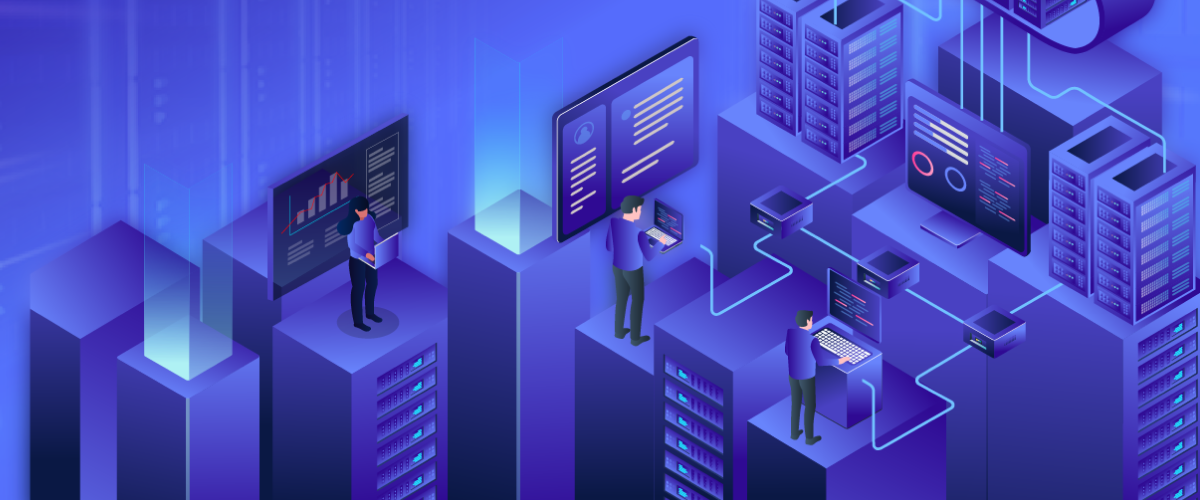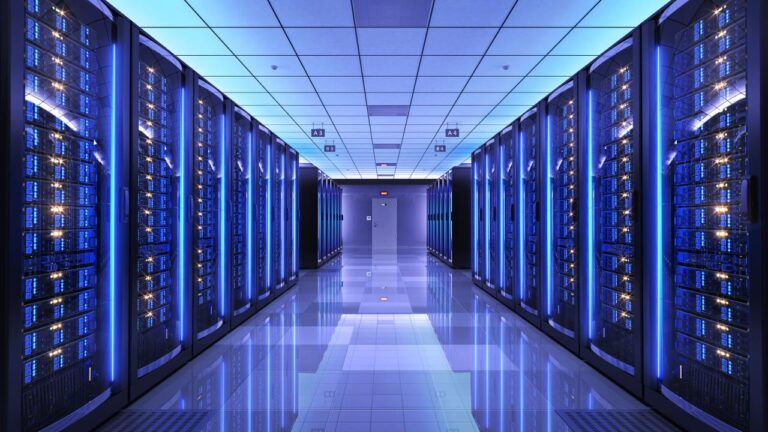The global server market is a dynamic and pivotal segment of the technology industry, acting as the fundamental engine behind nearly every digital interaction, from cloud computing and artificial intelligence to vast enterprise operations and burgeoning edge deployments. It’s a market defined by relentless innovation, intense competition, and a constant adaptation to evolving technological demands. Analyzing today’s trends reveals a complex interplay of forces shaping supply and demand, influencing investment, and dictating the future of digital infrastructure worldwide. Understanding this intricate landscape is crucial for businesses, investors, and technologists alike.
The Foundation of the Digital Economy

Servers are the unsung heroes of the modern age. They are the physical and virtual machines that store, process, and transmit the staggering amounts of data that define our interconnected lives. Every click, every stream, every financial transaction, and every AI model training session relies on server infrastructure. Consequently, the health and trajectory of the global server market directly reflect the vitality and direction of the broader digital economy.
Analyzing this market involves more than just tracking sales numbers. It requires deep dives into technological shifts, geopolitical influences, supply chain dynamics, and the specific demands of emerging workloads. The ongoing evolution from traditional on-premises servers to cloud-native, specialized, and edge-based solutions is fundamentally reshaping the market’s structure. This comprehensive analysis will shed light on the key drivers, challenges, and future prospects that are defining the global server market today.
Key Segments and Market Segmentation
The global server market can be segmented in various ways, each offering unique insights into its dynamics.
A. By Form Factor:
- Rack Servers:
- Characteristics: Standardized, horizontally mounted units that fit into server racks. They offer a good balance of performance, expandability, and density.
- Dominance: Still a dominant segment, especially for small to medium-sized enterprises and for specific applications in larger data centers that don’t require the extreme density of blades.
- Trends: Continued optimization for cooling, power efficiency, and increasing support for high-performance GPUs and other accelerators.
- Blade Servers:
- Characteristics: Modular server units designed for high density, sharing power, cooling, and networking within a chassis. Each blade is a self-contained server.
- Advantages: Ideal for large data centers seeking maximum compute density, simplified cabling, and centralized management.
- Trends: While once a major growth area, their growth has somewhat plateaued as hyperscale cloud providers often opt for custom rack-level designs, and modular microservers gain traction.
- Tower Servers:
- Characteristics: Resemble traditional desktop PCs but are designed for server-grade components and continuous operation. They are typically used in smaller offices or as standalone servers.
- Advantages: Cost-effective, simple to deploy, and suitable for environments with limited IT infrastructure.
- Trends: Market share continues to decline as businesses migrate to cloud services or opt for more efficient rack-mounted solutions.
- Microservers:
- Characteristics: Small, highly energy-efficient server nodes designed for scale-out, distributed, and specialized workloads. They emphasize density, low power consumption, and often utilize ARM-based processors.
- Growth Driver: A rapidly growing segment, particularly for edge computing, IoT gateways, and certain hyperscale cloud workloads that benefit from many independent, lower-power nodes.
- Trends: Increasing adoption of ARM processors, integration of specialized accelerators (e.g., for AI inference), and ruggedized designs for edge deployments.
- Mainframes and Supercomputers:
- Characteristics: Highly specialized, extremely powerful systems designed for mission-critical, large-scale transaction processing, and complex scientific computations.
- Niche Market: A relatively small but strategically vital market segment with highly specialized vendors (e.g., IBM for mainframes, various consortia for supercomputers).
- Trends: Continued innovation in performance, resilience, and integration with modern cloud paradigms.
B. By Processor Type:
- x86-based Servers:
- Dominance: Intel (Xeon) and AMD (EPYC) processors have historically dominated the server market, offering high performance, broad software compatibility, and mature ecosystems.
- Trends: Continued performance per watt improvements, increasing core counts, and integration of AI acceleration features. AMD has gained significant market share in recent years with its EPYC processors.
- ARM-based Servers:
- Rising Star: ARM-based processors (e.g., Amazon Graviton, Ampere Computing, NVIDIA Grace) are gaining significant traction due to their superior power efficiency, making them ideal for hyperscale cloud, edge, and certain web-serving workloads.
- Trends: Rapidly improving performance, growing software ecosystem support, and specialized designs for specific cloud-native and AI inference tasks.
- RISC-based Servers:
- Declining Share: Historically used by vendors like IBM (POWER) and Oracle (SPARC), these proprietary architectures have seen declining market share due to the dominance of x86, though they retain a niche in specific high-performance or legacy enterprise environments.
C. By End-User Industry:
- Cloud Service Providers (CSPs) / Hyperscalers:
- Largest Segment: The largest and fastest-growing segment. CSPs (Amazon AWS, Microsoft Azure, Google Cloud) build massive, custom-designed data centers to offer cloud services. They often demand highly customized, energy-efficient, and dense server solutions.
- Impact: Their purchasing power significantly influences server design and component innovation.
- Enterprises (On-Premises):
- Traditional Users: Businesses maintaining their own data centers for specific applications, regulatory compliance, or sensitive data.
- Trends: Migration to hybrid cloud models, increased adoption of virtualization and containerization, and a growing focus on energy efficiency.
- Small and Medium-sized Businesses (SMBs):
- Budget-Conscious: Often rely on simpler, less expensive servers or increasingly leverage cloud services.
- Trends: Gradual shift from physical servers to managed cloud services or smaller, cost-effective virtualization solutions.
- Telecommunications:
- Network Function Virtualization (NFV): Rapid adoption of servers for NFV, virtualizing network functions previously run on proprietary hardware.
- 5G Edge Deployments: Significant investment in microservers and specialized edge servers to support 5G network rollouts and edge computing services.
- Government and Public Sector:
- Security and Compliance: Prioritize robust security, compliance, and often domestic sourcing for server infrastructure.
- Trends: Hybrid cloud adoption, focus on data sovereignty, and high-performance computing for scientific and defense applications.
Key Market Drivers

Several powerful forces are propelling the growth and evolution of the global server market.
A. Exponential Growth of Data:
- Data Creation: The sheer volume of data being generated globally (from IoT devices, social media, scientific instruments, enterprise applications) continues to skyrocket, requiring ever-increasing storage and processing capabilities.
- Big Data Analytics: The need to store, process, and analyze massive datasets to extract valuable insights drives demand for high-performance servers optimized for parallel processing and large memory footprints.
B. Explosion of Cloud Computing:
- Public Cloud Expansion: The continuous expansion of public cloud services (IaaS, PaaS, SaaS) by hyperscalers drives massive server procurement, as they constantly scale their infrastructure to meet customer demand.
- Hybrid and Private Cloud Adoption: Enterprises are increasingly building or extending their private clouds and adopting hybrid cloud strategies, requiring significant investment in on-premises server infrastructure that seamlessly integrates with public cloud resources.
C. Artificial Intelligence (AI) and Machine Learning (ML):
- AI Training: Training complex AI models (e.g., large language models, deep neural networks) requires colossal computational power, predominantly provided by specialized servers equipped with powerful GPUs and AI accelerators.
- AI Inference: Deploying AI models for real-time inference at scale also drives demand for optimized servers, particularly at the edge.
- AI Chips: The rise of specialized AI chips (ASICs, DPUs) is influencing server design, integrating these accelerators directly into server architectures.
D. Edge Computing and IoT:
- Real-Time Processing: The proliferation of IoT devices and the need for real-time processing and decision-making at the “edge” of the network are driving demand for compact, energy-efficient microservers and ruggedized edge servers.
- Reduced Latency: Edge computing minimizes latency by bringing compute closer to data sources, enabling new applications in autonomous systems, smart cities, and industrial automation.
E. Digital Transformation Initiatives:
- Modernization: Businesses across all sectors are undergoing digital transformation, modernizing their IT infrastructure, migrating legacy applications, and adopting cloud-native architectures, all of which fuel server demand.
- Application Modernization: The shift to microservices and containerization drives demand for flexible, scalable server platforms.
Challenges and Restraints
Despite robust growth drivers, the global server market faces several significant challenges.
A. Supply Chain Disruptions:
- Geopolitical Tensions: Trade wars, political instability, and geopolitical competition (e.g., US-China tech rivalry) can disrupt the supply of critical components (semiconductors, raw materials) and finished servers.
- Component Shortages: Periodic shortages of critical components (e.g., specific chips, power management ICs) can delay server manufacturing and impact availability.
- Logistics Challenges: Global shipping delays, increased freight costs, and port congestion can impact server delivery times and costs.
B. Economic Headwinds:
- Inflation and Interest Rates: Rising inflation and higher interest rates can increase the cost of capital for businesses, potentially leading to delayed or reduced IT infrastructure investments.
- Recessionary Fears: Economic downturns or recessionary fears can cause enterprises to cut IT spending, impacting server sales.
C. Power Consumption and Environmental Concerns:
- Energy Demands: Data centers are massive energy consumers. The increasing density and power of modern servers exacerbate this issue, driving up operational costs and carbon emissions.
- Sustainability Mandates: Growing regulatory and corporate pressure for sustainability forces server manufacturers and data center operators to invest heavily in energy efficiency and renewable energy, adding to costs.
- Water Usage: Advanced cooling techniques (e.g., evaporative, liquid cooling) can lead to significant water consumption, posing a challenge in water-stressed regions.
D. Talent Shortage:
- Specialized Skills: A shortage of skilled IT professionals with expertise in advanced server technologies, virtualization, cloud management, and AI operations can hinder server deployment and optimization.
E. Security Threats:
- Evolving Cyber Threats: Servers are prime targets for cyberattacks (ransomware, data breaches, DDoS). The increasing sophistication of these threats necessitates continuous investment in server security, adding complexity and cost.
- Supply Chain Security: Ensuring the security of servers throughout their entire supply chain, from manufacturing to deployment, is a growing concern.
Competitive Landscape
The global server market is dominated by a few major players, alongside specialized innovators.
A. Dominant Hardware Vendors:
- Dell Technologies: A consistent leader, offering a broad portfolio of servers (PowerEdge), storage, and networking solutions, catering to both enterprises and hyperscalers.
- Hewlett Packard Enterprise (HPE): Strong in enterprise servers (ProLiant), blade systems (Synergy, BladeSystem), and rapidly expanding its GreenLake edge-to-cloud platform.
- Lenovo: A major player globally, particularly strong in x86 servers, leveraging its global manufacturing and supply chain capabilities.
- Inspur: A leading Chinese server vendor with significant market share in China and growing international presence, particularly in AI servers.
- Supermicro: Known for its highly modular, energy-efficient, and specialized server solutions, catering to niche markets, HPC, and AI.
- Cisco: Primarily known for networking, but also offers UCS (Unified Computing System) blade and rack servers, emphasizing converged infrastructure.
B. Hyperscale Cloud Providers (Major Purchasers & Innovators):
- Amazon Web Services (AWS): A massive consumer of servers, often designing its own custom server hardware, including its ARM-based Graviton processors, directly influencing manufacturers.
- Microsoft Azure: Another huge buyer, working closely with server vendors and also investing in custom hardware designs for its cloud infrastructure.
- Google Cloud: Known for its custom-designed infrastructure, including specialized AI accelerators (TPUs) and an increasing focus on energy-efficient server designs.
C. Processor Manufacturers:
- Intel: Still dominates the server CPU market with its Xeon processors but faces increasing competition.
- AMD: Has gained significant market share with its high-performance EPYC processors.
- ARM (and its licensees like Ampere Computing, NVIDIA): Rapidly growing in the server space, especially for cloud-native and edge workloads.
D. Strategic Responses and Competitive Strategies:
- Customization for Hyperscalers: Server vendors are increasingly offering highly customized server designs and direct manufacturing capabilities for hyperscale cloud providers.
- Software-Defined Infrastructure: Emphasis on integrating server hardware with robust software-defined networking, storage, and virtualization solutions to offer more comprehensive platforms.
- Sustainability Focus: Companies are investing heavily in energy-efficient designs, liquid cooling, and renewable energy integration as a key differentiator.
- AI-Optimized Servers: Significant R&D and product development are focused on servers specifically designed for AI workloads, integrating powerful GPUs and other accelerators.
- Edge-to-Cloud Portfolios: Offering integrated solutions that span from small edge servers to large cloud data center infrastructure, providing a consistent management experience.
- As-a-Service Models: Shifting from outright server sales to “as-a-service” models (e.g., HPE GreenLake, Dell APEX), allowing customers to consume IT infrastructure like a utility.
Future Outlook and Emerging Trends
The global server market is poised for continued transformation, driven by several key trends.
A. Continued Cloud Infrastructure Expansion:
- Hyperscale Growth: Public cloud providers will continue their massive expansion, remaining the largest consumers of server hardware.
- Hybrid Cloud Dominance: The hybrid cloud model will become the norm for enterprises, requiring seamless integration between on-premises servers and public cloud infrastructure.
B. AI Everywhere:
- Dedicated AI Infrastructure: The demand for servers optimized for AI training and inference will surge, driving innovation in GPU architectures, AI accelerators (ASICs, DPUs), and high-bandwidth interconnects.
- Edge AI: AI processing will increasingly move to the edge, leading to greater demand for energy-efficient, ruggedized microservers capable of local AI inference.
C. Rise of ARM in the Data Center:
- Market Share Growth: ARM-based servers will continue to gain market share, particularly in hyperscale cloud environments and for specific scale-out workloads, challenging x86 dominance.
- Ecosystem Maturity: The software and developer ecosystem for ARM servers will mature significantly, making it easier for organizations to deploy diverse applications.
D. Sustainability as a Core Design Principle:
- Net-Zero Data Centers: The industry will push aggressively towards carbon-neutral or even carbon-negative data centers, with sustainable server designs being a key component.
- Advanced Cooling Adoption: Liquid cooling (direct-to-chip, immersion) will become more mainstream, driven by higher power densities and the need for extreme energy efficiency.
- Energy Reuse: More data centers will implement solutions to capture and reuse waste heat from servers for other purposes.
E. Increased Automation and Software-Defined Everything (SDx):
- Autonomous Data Centers: AI and ML will increasingly manage server operations, leading to self-optimizing, self-healing data centers that require minimal human intervention.
- Programmable Infrastructure: The adoption of Infrastructure as Code (IaC) and software-defined everything (networking, storage, compute) will enable greater agility, consistency, and efficient resource utilization across server fleets.
Challenges to Navigate in the Future
The path forward is not without its obstacles.
A. Geopolitical Tech Rivalry:
The ongoing competition between major global powers, particularly in semiconductor and AI technologies, could lead to further supply chain fragmentation and increased costs.
B. Talent Pipeline:
The growing complexity of server technologies (e.g., AI integration, quantum, advanced cooling) will exacerbate the existing IT talent gap, making it harder to find and retain skilled professionals.
C. Cybersecurity Escalation:
As servers become more powerful and interconnected, they will remain prime targets for sophisticated cyberattacks, requiring continuous innovation in security measures.
D. Economic Volatility:
Global economic fluctuations, inflation, and interest rates will continue to influence IT investment cycles and server procurement decisions.
E. Regulatory Landscape:
Evolving data sovereignty laws, environmental regulations, and privacy mandates will impose new requirements on server deployment and data management.
Conclusion
The global server market analysis reveals a sector in constant flux, driven by an insatiable appetite for digital capabilities and a relentless push for efficiency. From the shift towards purpose-built microservers and the rising prominence of ARM architectures to the critical imperative of sustainability and the transformative power of AI, today’s trends are fundamentally reshaping the future of computing. While challenges persist – from supply chain vulnerabilities to escalating cybersecurity threats – the sheer necessity of robust server infrastructure for every facet of modern life ensures continued investment and innovation. The server market is not just selling hardware; it’s building the very foundation upon which tomorrow’s digital innovations will thrive, ensuring that the global digital economy remains resilient, powerful, and increasingly responsible.



